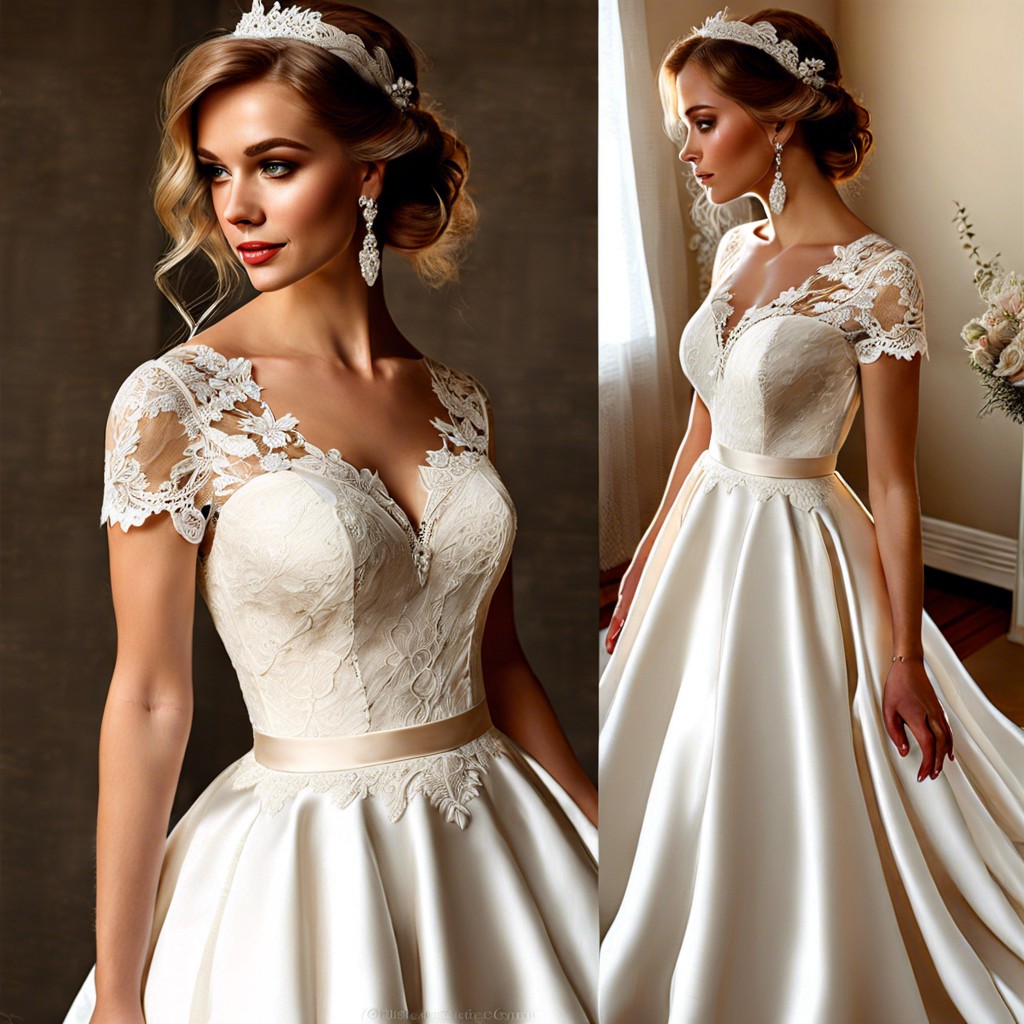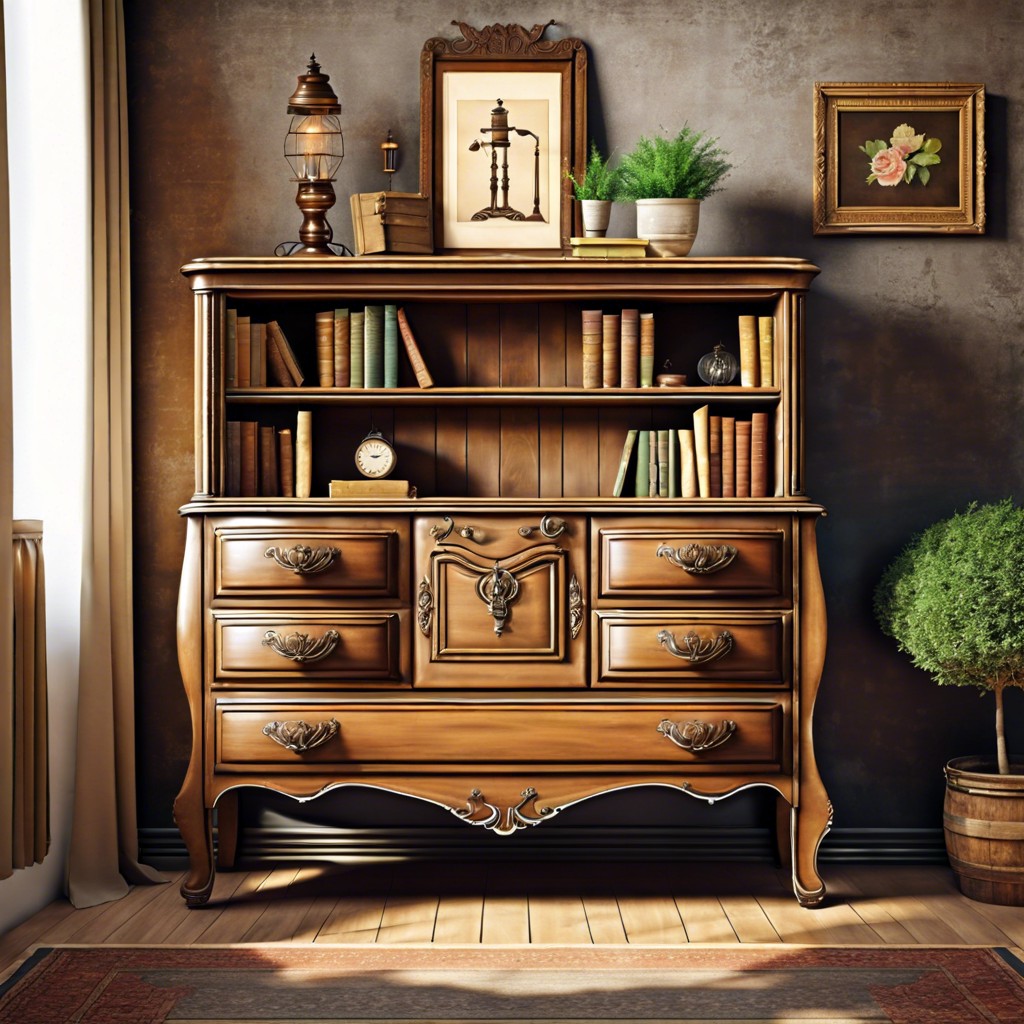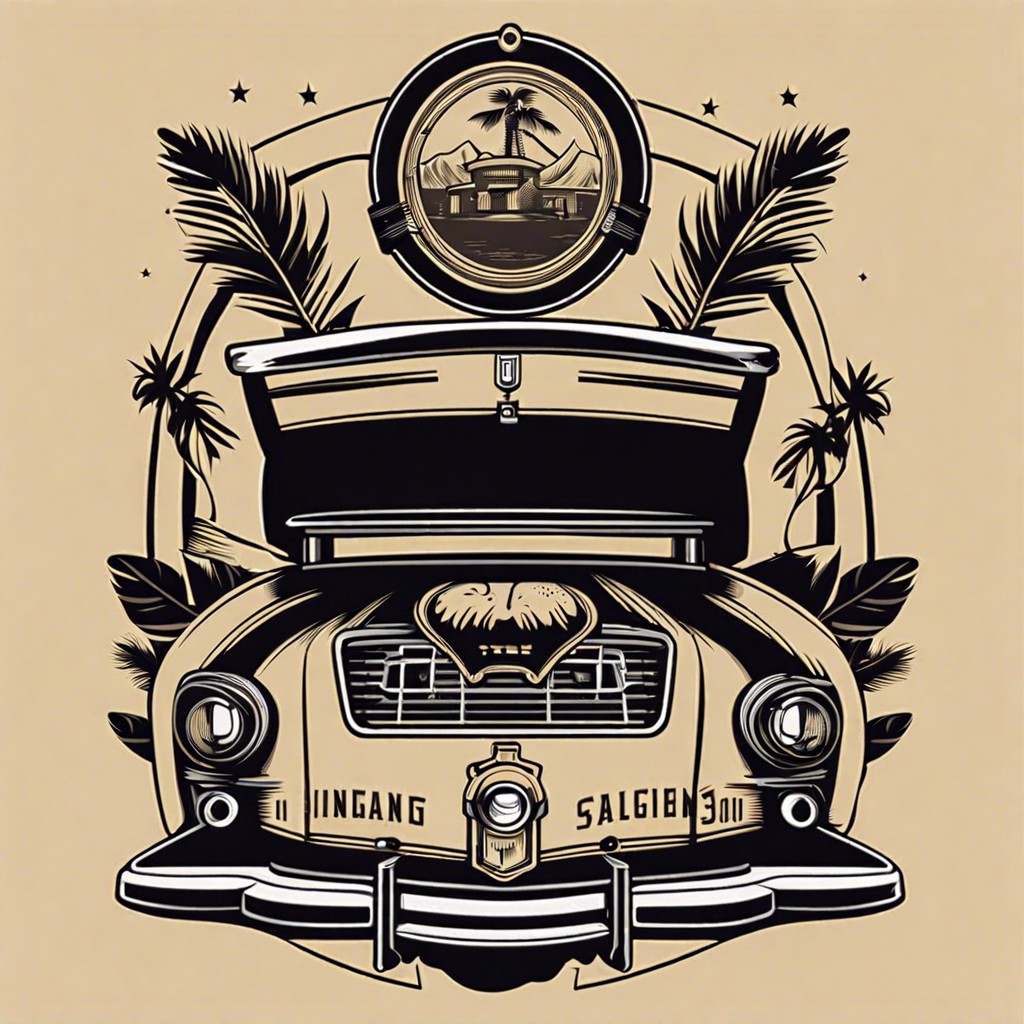Last updated on
Discover how to choose a vintage chair that complements your space and reflects your style.
Key takeaways:
- Vintage chairs reflect the societal norms and aesthetics of their era.
- Design aesthetics, construction quality, provenance, and patina are key characteristics of vintage chairs.
- Skilled craftsmanship and premium materials like wood, wrought iron, leather, and cane contribute to the timeless appeal of vintage chairs.
- Vintage chairs can be a smart financial investment, especially those with provenance, rarity, good condition, and value in the market.
- When navigating the market for vintage chairs, do your research, assess condition, compare prices, consult experts, consider provenance, and beware of fakes.
Historical Significance of Vintage Chairs
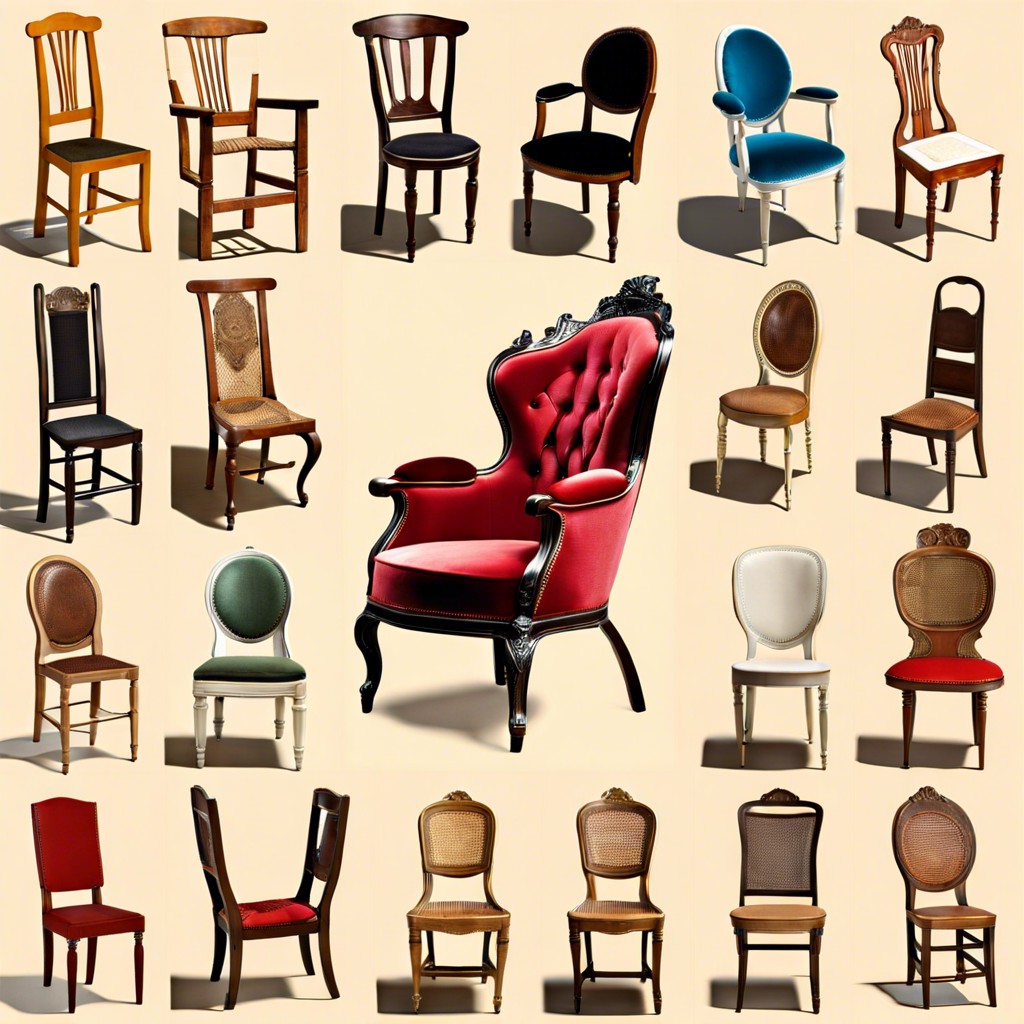
Chairs tell the story of cultural evolution. From the opulent thrones of monarchs to the simple, sturdy constructions of the Shaker movement, each style reflects the societal norms and aesthetics of its era.
The Industrial Revolution brought about changes not just in manufacturing but in furniture design. Mass production made chairs accessible to the average family, marking a shift from status symbols to functional household items.
The Arts and Crafts movement of the late 19th century reacted against this mass production. Advocates like William Morris emphasized handcrafted beauty, thus reinforcing the idea that a chair could be both practical and a work of art.
Mid-century modern designers injected a dose of innovation. Charles and Ray Eames used new materials like molded plywood and fiberglass to create shapes that broke with tradition, symbolizing the forward-thinking optimism of the post-war era.
Collecting vintage chairs is akin to preserving history. They serve as functional mementos, allowing us to sit in the lap of bygone times.
Defining Characteristics of Vintage Chairs
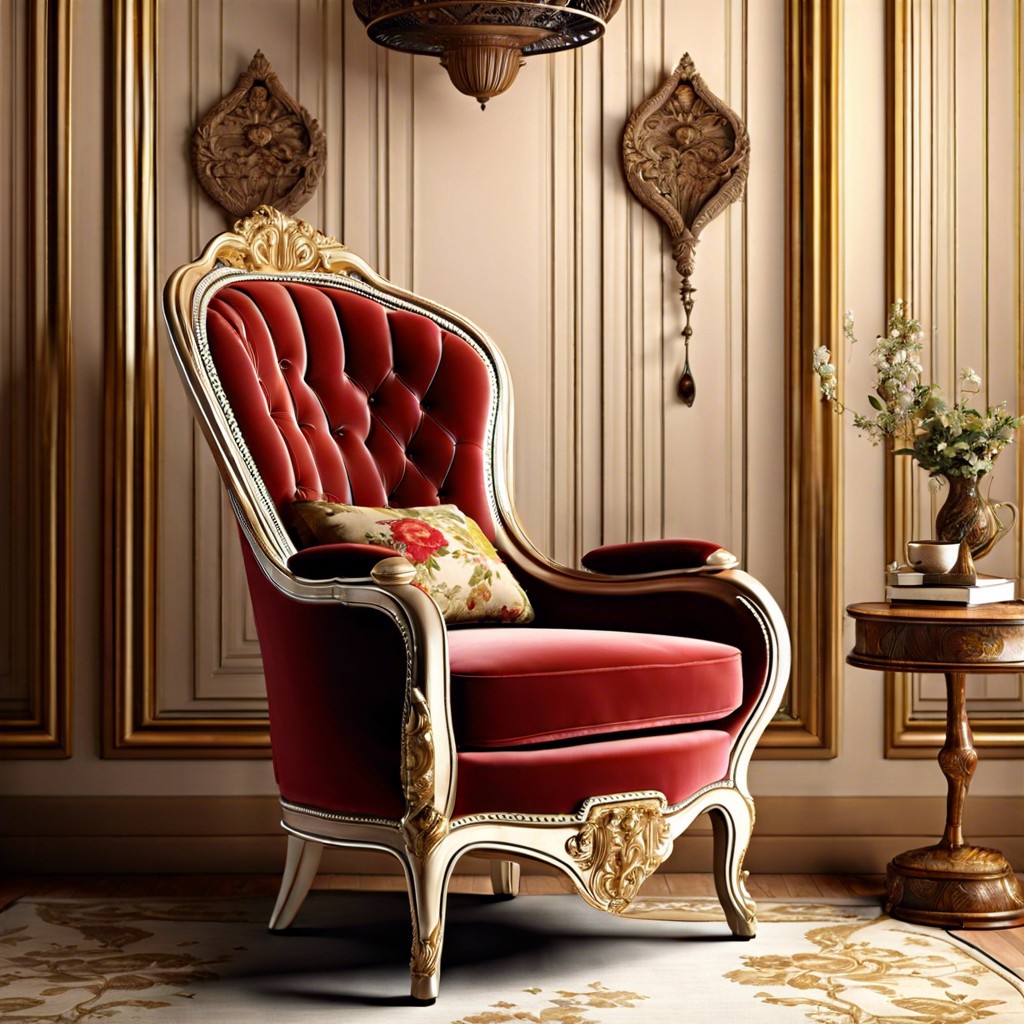
Age is a primary factor that distinguishes vintage chairs; typically, they span from 30 to 100 years old. These pieces reflect the styles and construction methods from the era in which they were created.
Design aesthetics vary greatly across the decades, with Art Deco curves of the 1920s, the clean lines of mid-century modern from the 50s and 60s, to the bold patterns iconic of the 70s. Recognizing these style hallmarks is key to identifying vintage chairs.
Construction quality in vintage furniture often surpasses contemporary pieces. Time-honored techniques like dovetail joints, hand-tied springs, and solid wood construction contribute to their longevity.
Provenance can add layers to a chair’s story and value. A piece with a well-documented history, perhaps linked to a notable designer or a significant event, elevates its desirability among collectors.
Patina, the natural wear that occurs over time, is another characteristic appreciated in vintage items. This authentic wear can signify age and add character, making each piece distinct.
Materials and Craftsmanship in Vintage Chair Design
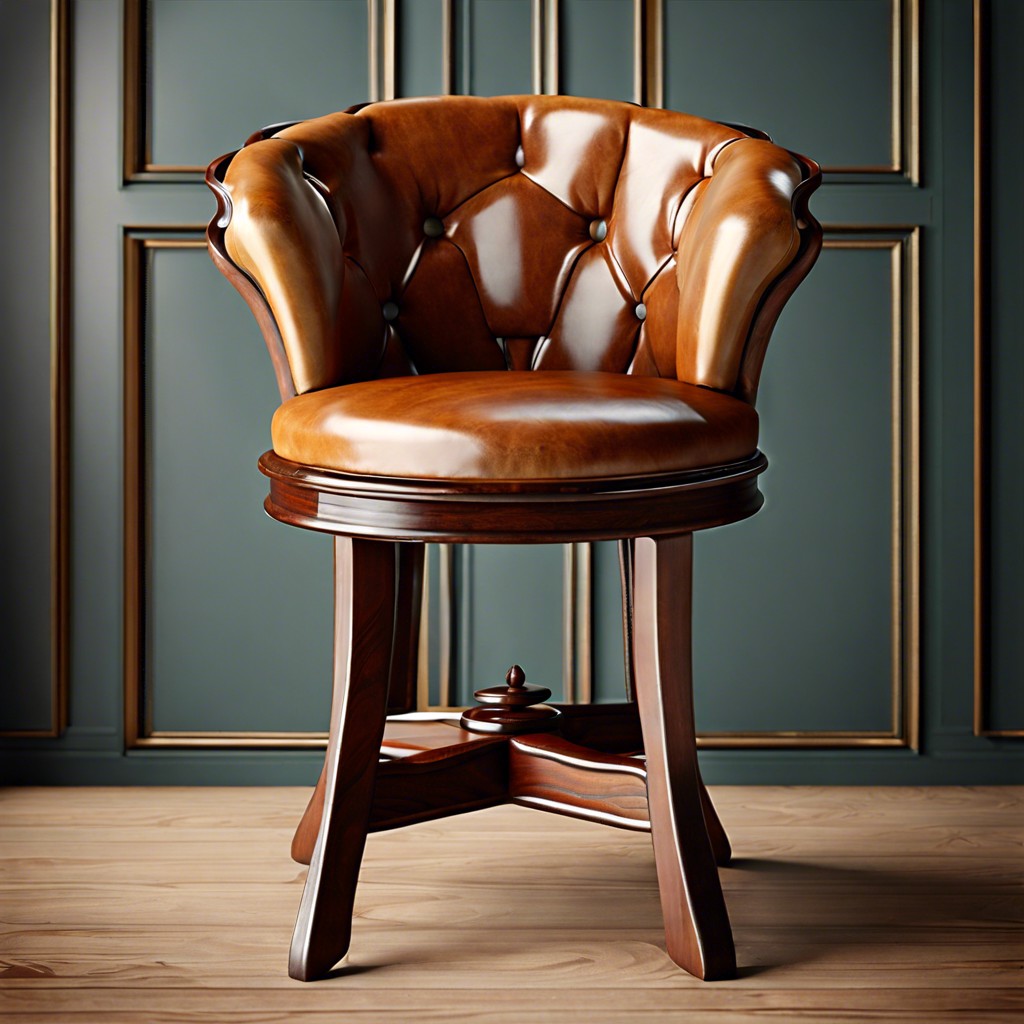
Skilled artisans of yesteryear often handpicked premium woods such as mahogany, walnut, and oak for their durability and rich patina that developed over time. A noteworthy fact is that vintage chairs frequently showcase joinery techniques like dovetails and mortise-and-tenon, which stand as a testament to the makers’ proficiency and their commitment to creating pieces for longevity.
Aside from wood, other materials like wrought iron, leather, and cane were popular for their aesthetic appeal and functional qualities. Wrought iron offered intricate designs while leather provided comfort and a touch of luxury; cane was prized for its lightness and breathability.
The upholstery of vintage chairs tells a story of the past, through fabrics like velvet, brocade, and tapestry. Often decorated with hand-stitched embroidery or nailhead trim, these textiles add character and a glimpse into the design sensibilities of the period.
Finish plays a pivotal role, as it not only protects the material but also enhances the overall look. Oil and wax finishes were common in preserving the chair’s surface, allowing the natural beauty of the material to shine through.
Each chair’s design cues echo the cultural and social trends of its time, whether it be the ornate carvings of the Victorian era, the sleek lines of Art Deco, or the organic forms of mid-century modernism. These elements combined, tell a tale of craftsmanship that extended beyond mere function, inviting sitters into a lap of history.
Investment Value of Vintage Chairs
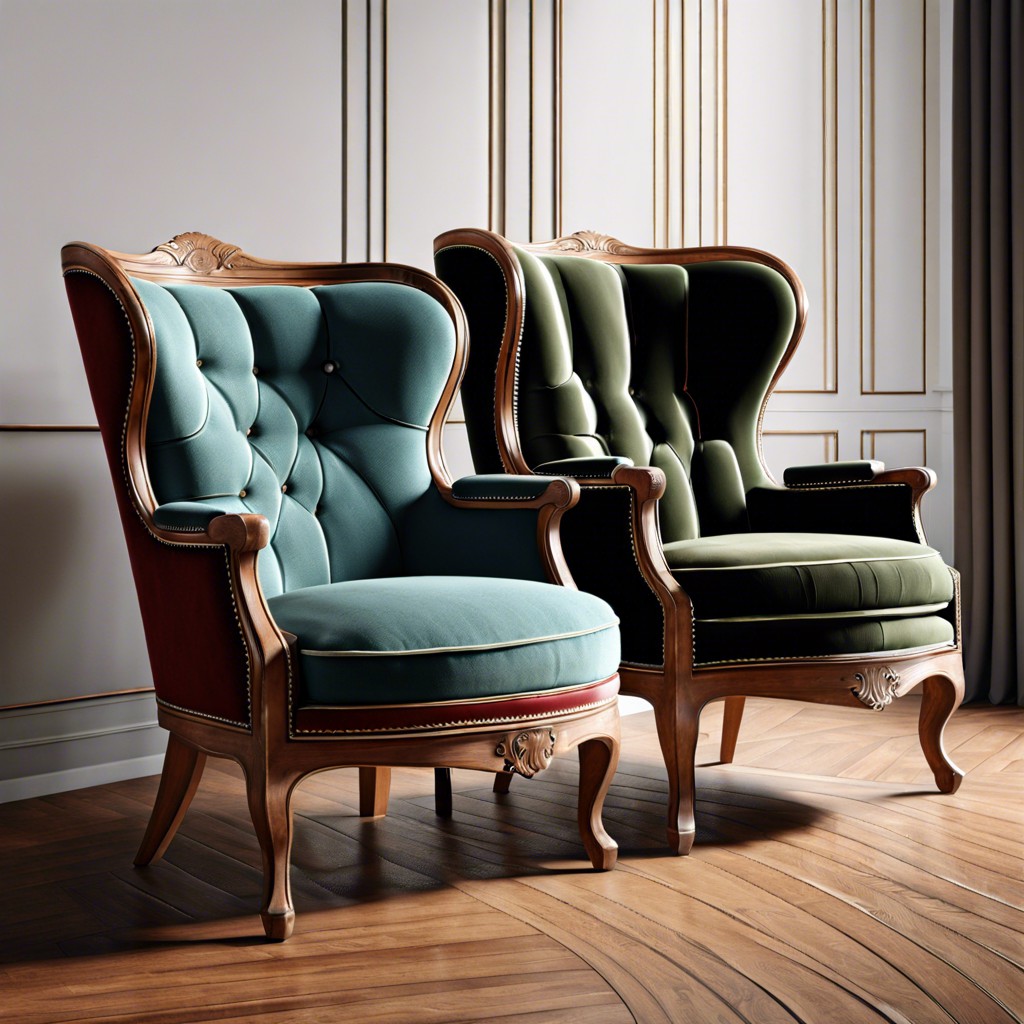
Vintage chairs can be more than a stylish addition to a room; they hold potential as financial investments. Savvy collectors know that certain factors boost a chair’s value over time.
Firstly, provenance plays a significant role. A chair with a traceable history, especially one linked to notable individuals or events, can command a premium. For instance, a seat once used by a literary giant or crafted for a historical event is not just a place to sit; it’s a piece of history.
Next, rarity adds to a chair’s allure. Limited production runs or discontinued styles create demand among enthusiasts eager to own a slice of design history. Remember, the harder a chair is to find, the more sought-after it will become.
Condition also affects value. A well-preserved chair that retains its original fabric or finish is generally more valuable than one that has been heavily restored. It’s the difference between an authentic artifact and a revitalized furniture piece.
Finally, market trends should be considered. What’s hot today may cool tomorrow. Keeping a finger on the pulse of design trends and adjusting your collection accordingly can pay dividends.
In sum, if chosen wisely, vintage chairs can increase in value, making them a smart choice for both design aficionados and investment-minded individuals.
Navigating the Market for Vintage Chairs

Start by doing your homework. Familiarize yourself with various eras and styles such as Art Deco, Mid-Century Modern, or Victorian. Each has distinctive features that can affect a chair’s market value and authenticity.
Keep an eagle eye on condition. Scratches and wear can signal authenticity, but extensive damage may reduce a chair’s worth. Upholstery should also be scrutinized; original fabric often increases value.
Cross check prices. Compare items across different platforms – from auction houses to online marketplaces. Don’t take the first price you see as gospel; a bit of digging can lead to better deals.
Connect with experts. Building relationships with knowledgeable dealers can provide insider information and alert you to upcoming sales not yet on the mainstream radar.
Remember, provenance adds value. Chairs with a well-documented history or previous ownership by notable individuals are often more desirable.
Lastly, be aware of fakes. Replicas abound in the vintage market. Learn the markers of authenticity specific to the chair you are after, or have an expert verify before purchasing.

